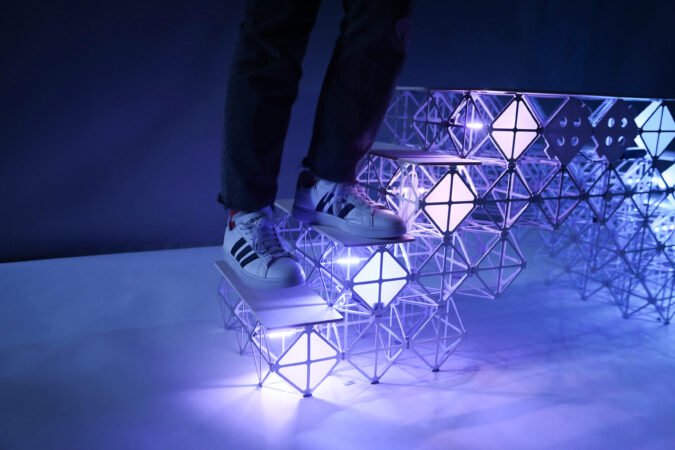Quick Takeaways
-
Innovative Prototyping: MIT’s new Voxel Invention Kit (VIK) revolutionizes the prototyping process by utilizing reconfigurable, lightweight voxels with integrated electronics, eliminating the need for traditional 3D printing and reducing waste.
-
User-Friendly Design: VIK features a simple interface that enables users to simulate their structures, allowing anyone—even those without engineering expertise—to confidently create functional interactive devices.
-
Strong and Functional: Each voxel can support significant weight (up to 228 kg), and they combine structural strength with integrated electronics for easy data transmission and power management without traditional wiring.
- Broad Applications: VIK’s reconfigurability and recyclability make it ideal for various applications, including theatrical set design and future smart buildings, inviting creativity and innovation across sectors.
MIT Researchers Unveil VIK: A Game-Changer for Rapid Prototyping
MIT researchers have introduced an innovative platform called the Voxel Invention Kit (VIK), designed to simplify prototyping large interactive structures. This breakthrough technology allows users to create sturdy devices like chairs that can monitor posture, all without the burden of extensive waste and labor.
Traditionally, building such interactive devices meant producing multiple versions through 3D printing and laser cutting. This process can be costly and inefficient. However, VIK changes that. It uses reconfigurable building blocks known as voxels, which incorporate integrated electronics into their design. These blocks are lightweight yet strong, allowing for endless configurations and iterations.
Jack Forman, an MIT graduate student, emphasized the platform’s goal: “This is about democratizing access to functional interactive devices.” Users do not need engineering expertise to engage with VIK. Instead, they find a user-friendly design tool that facilitates simulation and iteration, making it accessible to everyone.
Each voxel costs around 50 cents and features a snap-fit connection. This design allows for easy assembly and disassembly without tools. Researchers intentionally made the voxels larger, ensuring that users can manipulate them comfortably.
The functionality of VIK extends beyond simple assembly. Users can integrate various components like sensors and speakers, broadening the scope of possible interactive devices. Additionally, VIK’s compatibility with common microcontrollers further enhances flexibility for creators.
Moreover, VIK promotes environmental sustainability. If a user decides to discard a prototype, the aluminum voxels are fully recyclable. This aspect, combined with their strength and versatility, makes VIK a potential asset for industries such as theatrical production and smart building design.
The future of VIK looks promising. As Victor Zaderej from Molex stated, “Think of the VIK as the merging of a LEGO building kit and an electronics breadboard.” The potential applications are vast, ranging from space fabrication to sustainable city infrastructure.
Forman expressed excitement about VIK’s impact: “It will be thrilling to see what users create with this new technology.” With VIK, the realm of possibilities in design and technology continues to expand, paving the way for innovative solutions in various fields.
Expand Your Tech Knowledge
Dive deeper into the world of Cryptocurrency and its impact on global finance.
Discover archived knowledge and digital history on the Internet Archive.
QuantumV1

